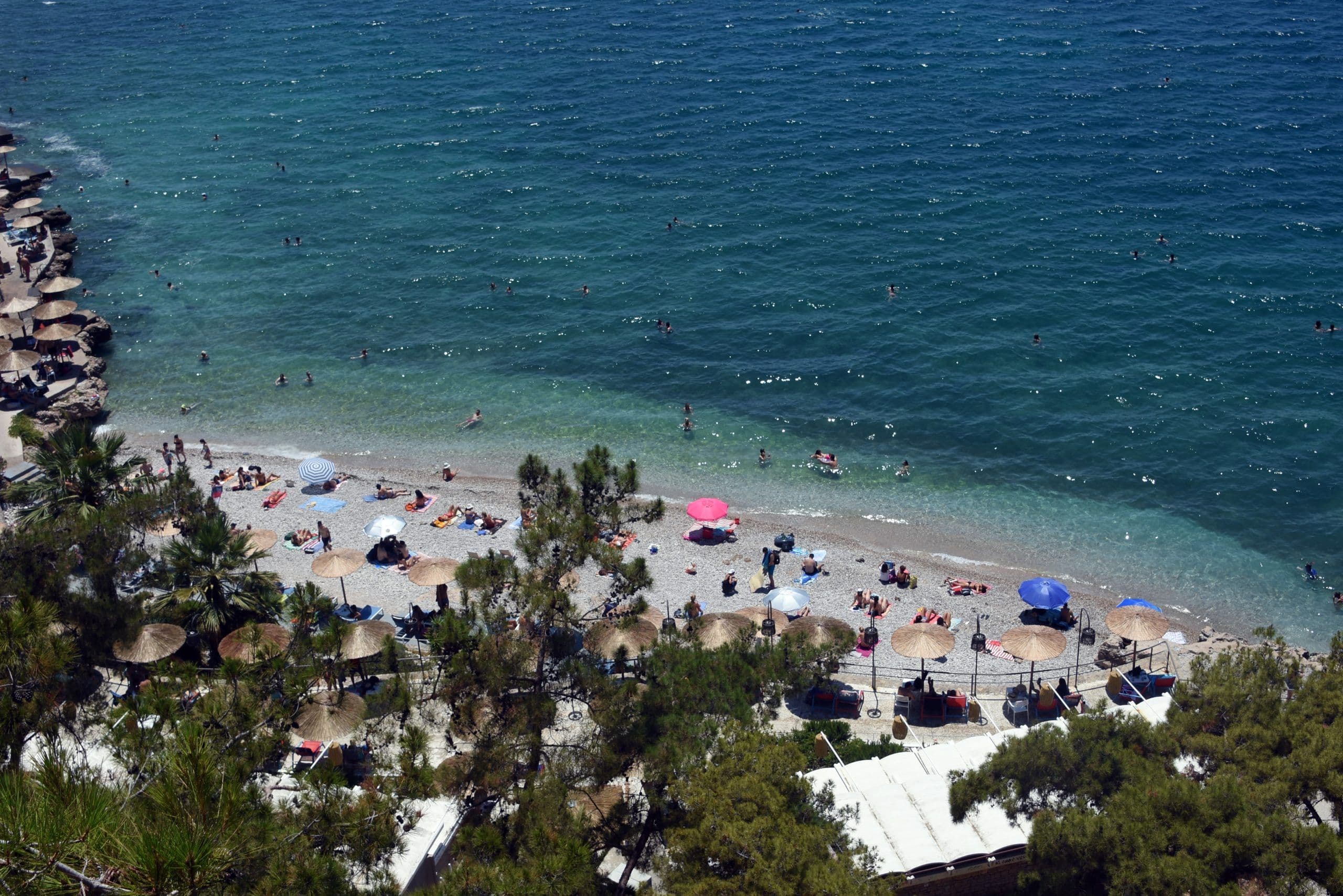The Unsettled Sky: Rethinking Preparedness as Greece's Climate Shifts
July 31, 2025
•2 min readGreece faces volatile weather swings. Discover how the nation is re-evaluating readiness, building community resilience & preparing for climate's new reality.
From Heatwave to Hail: Understanding Greece's Volatile Weather Swings
[Greece]{.entity data-type="LOCATION"}, a nation renowned for its sun-drenched landscapes and idyllic summers, is increasingly grappling with a starkly different reality: a climate characterized by rapid and severe weather swings. The traditional perception of predictable seasonal patterns is giving way to a new normal, where extreme conditions can emerge with little warning. Consider the recent Emergency Weather Bulletin (EDEK) issued by the [National Meteorological Service (EMY)]{.entity data-type="ORGANIZATION"}, a clear indicator of this unsettling trend. This bulletin, far from being an isolated event, highlights the potential for a dramatic shift from blistering heat – a common feature of Greek summers – to intense meteorological phenomena within hours. It forecasts powerful thunderstorms, heavy rainfall, localized hail, and exceptionally strong winds across northern and central Greece. This isn't just a bad weather forecast; it's a snapshot of a deeper, evolving pattern where the country experiences a whiplash effect, transitioning from periods of intense heat to sudden, destructive deluges. This volatility demands more than just daily updates; it necessitates a fundamental re-evaluation of how society understands and prepares for its changing environment.

Mapping the Tempest: Where and Why Extreme Events Strike
Pinpointing where these volatile weather events are likely to strike is crucial for effective preparedness. While the entire Greek landscape is susceptible to the whims of a changing climate, certain regions consistently bear the brunt of these extreme shifts. The [EMY]{.entity data-type="ORGANIZATION"}'s latest bulletin, for instance, specifically warns of severe conditions across Central and Eastern Macedonia, Western Macedonia, the mountainous and semi-mountainous areas of [Epirus]{.entity data-type="LOCATION"}, [Thrace]{.entity data-type="LOCATION"}, the [Sporades islands]{.entity data-type="LOCATION"}, and [Thessaly]{.entity data-type="LOCATION"}. These areas, often characterized by diverse topographies ranging from vast plains to rugged mountain ranges and coastal exposure, present unique vulnerabilities. For example, inland plains like Thessaly are prone to flash flooding from intense rainfall, while mountainous regions in Epirus can experience severe erosion and landslides. The Central and Eastern Macedonian regions, alongside Thessaly, are frequently identified as hotspots for the most intense phenomena, suggesting a convergence of atmospheric conditions that amplify storm severity. Understanding these geographical patterns isn't merely about tracking a storm's path; it's about recognizing the inherent vulnerabilities of different landscapes and tailoring resilience strategies accordingly, moving beyond generic warnings to targeted interventions.
Beyond Immediate Warnings: Building Community Resilience for the Long Haul
Moving beyond the immediate urgency of weather warnings, Greece is embarking on a critical journey to foster long-term community resilience. The convening of the Risk Assessment Committee by the [General Secretariat for Civil Protection]{.entity data-type="ORGANIZATION"}, prompted by the anticipated weather deterioration, exemplifies this shift. This isn't just about preparing for a single storm; it's about embedding preparedness into the fabric of society. The committee, drawing on scientific expertise, aims to translate meteorological forecasts into actionable strategies, anticipating potential impacts like floods from heavy rains and damage from strong winds and hail. Furthermore, the proactive steps taken by the [Civil Protection]{.entity data-type="ORGANIZATION"} — informing state services, regional authorities, and municipalities to be on heightened readiness — underscore a collaborative approach. It signals an understanding that true resilience is a collective endeavor, requiring seamless coordination across different administrative levels and sectors. This integrated strategy acknowledges that a robust defense against unpredictable weather isn't just about issuing an alert, but about building a resilient infrastructure and an informed, prepared populace capable of weathering future storms.
The Mindset Shift: Cultivating Proactive Safety in Unpredictable Times
For citizens, adapting to Greece's 'new normal' weather patterns demands more than simply reacting to official warnings. It requires a fundamental mindset shift towards proactive safety. The [General Secretariat for Civil Protection]{.entity data-type="ORGANIZATION"}'s recommendations for citizens to take self-protection measures are not just guidelines; they are an invitation to active participation in personal and community safety. This means moving beyond passive consumption of news to actively seeking information from reliable sources like the [EMY]{.entity data-type="ORGANIZATION"}'s daily weather bulletins and website. It's about understanding the specific risks associated with one's location – whether it's flash floods in urban areas or landslides in mountainous terrain – and taking preventative steps. This proactive stance might involve preparing emergency kits, securing outdoor items, or adjusting travel plans well in advance. Cultivating this sense of personal responsibility and foresight is crucial. It transforms citizens from mere recipients of information into active agents of their own safety, fostering a culture of preparedness that is essential for navigating an increasingly unpredictable climate landscape.

Charting a Resilient Future: Greece's Path in a Changing Climate Landscape
As [Greece]{.entity data-type="LOCATION"} navigates its increasingly turbulent climate, the path forward is clearly defined by a commitment to long-term resilience and adaptation. The very existence of a [Ministry of Climate Crisis and Civil Protection]{.entity data-type="ORGANIZATION"} underscores the nation's strategic recognition of this challenge. While immediate responses to severe weather, like the recent [EMY]{.entity data-type="ORGANIZATION"} bulletin and [Civil Protection]{.entity data-type="ORGANIZATION"}'s swift actions, are vital, they are increasingly framed within a broader, more comprehensive national strategy. This strategy isn't just about mitigating the impact of the next storm; it's about fundamentally reshaping infrastructure, urban planning, and public awareness to withstand the 'new normal.' It involves continuous investment in early warning systems, strengthening emergency response capabilities, and fostering an adaptive mindset across all levels of society. Greece's journey towards a resilient future is a dynamic process, one that requires ongoing scientific insight, robust policy development, and sustained public engagement. It’s a testament to the fact that while the weather may be unpredictable, the resolve to protect communities and build a sustainable future remains unwavering.
Related Articles

From Scorched Earth to Sky's Fury: Greece's Dramatic Weather Metamorphosis
3 months ago
•2 min read
From Scorched Earth to Sky's Fury: Greece's Dramatic Weather Metamorphosis
3 months ago
•2 min read
The Unseen Scorch: How Greece's Summers Are Silently Reshaping Life
4 months ago
•2 min read
The Unseen Scorch: How Greece's Summers Are Silently Reshaping Life
4 months ago
•2 min read
When Azure Skies Roar: Unraveling Greece's Intense Summer Storms
3 months ago
•2 min read
When Azure Skies Roar: Unraveling Greece's Intense Summer Storms
3 months ago
•2 min read
Greece's Fiery Week: Mastering Survival Amidst a Historic 45°C Blast
4 months ago
•2 min read
Greece's Fiery Week: Mastering Survival Amidst a Historic 45°C Blast
4 months ago
•2 min readNext Article
Continue scrolling to read